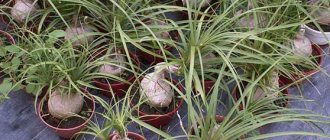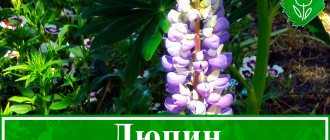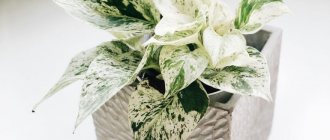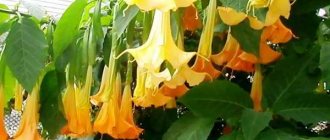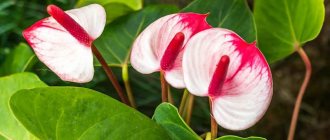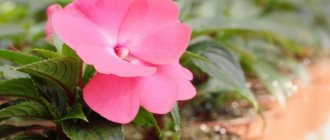They name this houseplant differently, often giving it the names of other potted plants that are similar in appearance (elephant's foot, bottle tree, horse or ponytail). It should be correctly called “bocarnea” or “nolina”. Everyday care at home for this indoor flower will not require much effort, since in its homeland it is not spoiled by nature, surviving in harsh places where rain happens once or twice a year. Thanks to its unusual shape, it has a spectacular appearance that fits harmoniously into almost any modern interior, especially high-tech and fusion, giving it a special tropical “zest.”
Light
These plants will grow slowly and although will do well in a slightly shaded location, they need bright light to thrive. If you provide some sun, within a few weeks you will see the plant turn this into lush new leaves, meaning more light means more growth.
Nolina plants grown in the shade should not be suddenly moved and thrown into a very sunny location. Move the plant to this new location for a few hours a day and then back again. Do this for a week to get used to the change in light intensity. This will prevent the leaves from becoming disfigured.
Pests
Nolina is resistant to the adverse effects of pests, but sometimes they still attack, causing significant harm to her. The faster they are detected, the higher the chances of saving the plant.
- Scaleworms. They become especially active when the plant experiences moisture deficiency. For Nolina, this condition is quite rare, but still possible. Prevention consists of the correct watering schedule and maintaining sufficient air humidity (at least 60-70%).
- Shield. This pest attacks the leaves, causing small sticky droplets to appear on them. The only way to get rid of scale insects is to wipe the leaves with soapy water and then wipe them dry.
- Spider mite . If the leaves are too small and curl into a tube, then the plant is suffering from mites. To destroy it, it is necessary to use special sulfur-based preparations.
Watering
At the base of Nolina there is a thick, swollen stem that has a woody appearance. It is a water storage organ that can support the plant during drought. This characteristic feature in the flower description should indicate to you that the plant is ready for long periods between waterings. An excellent houseplant for those who enjoy peace of mind and low maintenance.
Tip: If you grow your flower in a very small pot with little soil, it will dry out faster and may need more frequent watering, this is an important detail in how to water your flower.
Ideally, you should aim to water at least a few times a month (once a week in high summer if possible), and make sure it's a thorough watering.
Water supplies will support the plant if you forget to water it from time to time, but don't make it a habit or you'll end up with a struggling plant rather than a thriving one.
Correct steps after purchasing nolina
Particular attention should be paid to choosing a suitable container. It should not be too deep, because the root system of nolina is located close to the surface. This is explained by the fact that in nature it most often grows on rocky soils. It is best to choose a pot with a wide base.
Nolina does not need frequent replanting; on average, for an adult plant, it is enough to change the container once every 5 years . If the nolina is young, then you will need to do this more often, each time increasing the width of the pot by 2-3 cm .
Experts advise replanting Nolina immediately after purchase. In this case, the first watering is possible no earlier than after 4-5 days .
Temperature
When it comes to temperature requirements, unlike most houseplants, Nolina is almost hardy and can withstand sub-zero temperatures. However, when growing at home, your plant's exposure to such low temperatures will likely be an accident rather than a common occurrence, right?
To be on the safe side, try not to go below 7°C, and although higher temperatures are acceptable, you should achieve good growth at around 21°C.
Common types
Of the three dozen natural varieties in culture, the following species are most widespread.
Beaucarnea rejected
The most common variety of “bottle tree”, which has a classic shape. Lightweight and undemanding to care for, it was cultivated back in the 19th century. It has very durable leaves, which in Mexico are used as material for weaving national sombrero hats.
Beaucarnea condensed
It is valued by home gardeners for its lush, spectacular crown with straight, hard leaves. The second most popular cultivated species. Relatively winter-hardy, withstands short-term temperature drops down to -5C.
The thickening of the trunk in this variety is weakly expressed, the leaves have a bluish tint. In Mexico, this species is called bear grass. Winter hardiness is high, up to -12C.
Nolina Lindemeira
The shortest, practically without a trunk. The leaves are very thin, cord-like, dry and hard.
Nolina thin (slender)
The name of this species sounds like irony, since the thickness of the trunk is a record holder in terms of volume - in the wild in the lower part it reaches 5-7 m. It blooms only in adulthood and only in natural conditions.
Fine gravel or colored pebbles poured into a pot will prevent the formation of a soil crust and emphasize the exoticism of the crop.
How to care for nolina?
Care at home should be carried out taking into account the fact that the plant is a pronounced succulent.
Choice of location, lighting
While the majority of even light-loving indoor plants require light shading during hot midday hours from direct sunlight, nolina tolerates them calmly, so it should be placed on the brightest, southern windowsill. A little partial shade during the day will not be critical for it. However, the less light the foliage receives, the less lush it will grow. During the winter season, windowsills facing east and north require additional lighting.
Soil requirements
If bocarneya is completely undemanding in terms of soil nutrition, then it makes high demands on its moisture permeability and aeration. In the wild, it has to make do with infertile soils on rocky slab foundations, so growing nolina at home needs to be as close to them as possible. At the same time, the plant grows very slowly, so to obtain faster results, favorable conditions should be created that do not contradict the biological characteristics of the bottle tree. The substrate is made up of leaf and turf soil with a predominance of the former, peat and sand. You can add a little humus. Heavy drainage is installed at the bottom of the pot to stabilize the container. It is not recommended to use expanded clay for this purpose if the height of the dishes is not commensurate with the height of the tree.
How to water?
The issue of watering is key when growing nolina. If you place it on a southern windowsill and water it very rarely, with considerable exposure after the earthen ball has completely dried out, a stressful situation will be created, similar to growing in its homeland. In response, the plant will begin to form a thick “leg” with decorative cracks and scars that appear from the uneven expansion and contraction of the outer tissues. But the leaf rosette will begin to thin out and may droop, which will be to the detriment of decorativeness. To maintain a harmonious appearance, balance must be found. Spraying is usually not necessary for the crop, but occasional wet treatment of the leaves will be beneficial.
Bottom watering through a tray is recommended. The water should be well settled or filtered, without traces of chlorine.
Bocarnea loves summer sun-air baths outside in dry and windless weather.
During the winter season, the plant has an unexpressed dormant period; there is no need to water it at this time; it is enough to occasionally moisten the leaves by wiping them with a damp sponge to remove dust.
Top dressing
Since the vegetative mass accumulates slowly, care should be taken to ensure that there is no excess nitrogen in the soil. This element causes soft leaves and their sagging, which negatively affects the decorative effect. Occasionally, and only in the warm season, the specimen can be fed with a liquid phosphorus-potassium complex in half the recommended dose.
Temperature
Bocarnea loves warmth and does well even in hot conditions. But she needs rest and a relative rest phase during the winter season. It is desirable that the temperature at this time remains within +15C or does not differ from this indicator by more than 5⁰.
Transfer
If it grows well, it can be replanted once a year. If conditions are not so good or you want to limit the size of the plant, only replant every 2 or 3 years.
As long as you feed them about once a month, these houseplants still do well in small pots, and although most of them are above the surface, the roots can be quite compact, as seen in Nolina's photo.
When it's time to replant, there are no special soil or tips to follow. Standard everyday soil will do, just make sure it's fresh and not old or used. In terms of appearance and cosmetics, you can try using a tall container to keep the long leaves from dragging on the ground.
Description
Nolina - what kind of plant is this?
Belongs to the species Agavaceae. Latin name: Nolina. Unofficial names: bottle tree and decorative Bocarnea.
The plant is distributed in the southern part of America in the states of Texas, Arizona, California, and New Mexico.
In the wild it has the shape of a miniature tree. At the base the trunk widens greatly.
It serves to conserve water that feeds the plant.
Since this representative of the flora grows in arid desert states, it has acquired the ability to retain moisture during prolonged drought.
This expanded base is called a caudex - a swelling.
As moisture and nutrients are used, the thickening decreases. At the same time, folds appear in the bark. During periods of rainfall, Nolina's reserves are replenished, and the caudex again increases in volume.
The crown of the plant is powerful and very dense. The leaves are narrow, elongated, very hard. The leaves have a miniature evaporating surface. They are shaded by a trunk of caudex water.
The reservoir protects the surface from overheating. Therefore, it is generally accepted that all parts of the flower are perfectly adapted to growing in arid areas.
Nolina (Bocarnea) photo:
Here you can read an interesting article about one of the types of bottle tree “Nolina Recurvata” (Bocarnea Recurvata) and the features of caring for it.
Reproduction
Propagation of the Nolina palm is quite difficult because it is usually done through periodic displacements. The difficulty is that the offsets depend on the parent plant and do not take root very quickly. This means that if you separate the shoot too early, it will rely on you.
If you try to propagate, you can use rooting hormone to increase your chances. Then you should stick to indoor care.
To grow Nolina from seeds, you need to maintain high humidity and temperature; small greenhouses made of polyethylene or a plastic bottle will help with this. Simply cover the soil to create these conditions. The seeds are placed on moist soil and covered with a 1 cm thick layer of soil. The temperature should be +20 +23, the light is bright and diffused. After the shoots appear, you need to wait for them to get stronger before further transplanting into separate pots.
Possible problems during cultivation
- The trunk does not thicken, but grows upward. The reason is lack of lighting and too frequent watering. It is necessary to move the plant to a bright place and practice regular but moderate dry periods.
- The leaves of the lower tier dry out and fall off. The situation is not problematic because a natural process is taking place. It is better not to tear off dried leaves, but carefully trim them with sharp scissors.
- The ends of the leaves dry out. Despite the plant's drought resistance, it sometimes suffers from excessive dry air, since it is naturally moistened by morning dew. The problem especially often occurs in winter when kept in a room with central heating. Help - light spraying with soft, settled water without chlorine. The first time is every day early in the morning.
- The trunk shrinks, decreases in volume and dries out. Usually this process is observed after a long winter, in this case it is natural. In spring, the tree will begin to accumulate moisture again.
- The leaves become soft and do not form a beautiful “hair”. The reason is an excess of nitrogen in the soil.
- Leaves that are not located at the bottom of the rosette dry out, or all the foliage becomes paler. This could be a sign of dangerous root rot. The reason may be excessive watering, especially in the cold season, as well as drafts, which bokarneya is very afraid of. If root rot is suspected, the plant should be removed and the roots examined. Rotten parts are carefully removed. If rot has affected the trunk, the damaged part should be cut out and the cut should be sprinkled with ash. If the area of the rotten part is large, the plant will most likely die.
Growth rate
Expect very slow or no growth if light levels are low or you don't follow step-by-step care tips. Under favorable conditions, you will still experience slow growth!
The simple truth about these plants is that they are slow growers. This is good if you don't want it to outgrow the space, but not so good if you want it to quickly grow into a tall and stately plant.
Is Nolina poisonous?
No, the flower is not toxic to dogs, cats or people. Although you should keep it away from pets as they may be mistaken for a toy and will be damaged by sharp claws or curious teeth.
How to care: summary
Medium to bright light. Preferably good light with some sun. Avoid dark areas.
Watering from low to moderate. Water well, and then don't water again until the potting mix is almost completely dry.
Temperature. A warm room with a temperature of about 21 ° C is necessary, otherwise the plant will not grow.
Feeding. Use liquid fertilizer once a month (or less often).
Types of bocarnea, homemade nolina with photos and names
There are approximately 30 species of bocarnaea in the wild. Only a few of them can be grown at home.
Nolina recurvata
The most common type of homemade bocarnea. The height of an adult tree can reach 2 m, the diameter of the thickened part of the trunk is about 1 m. The top of the trunk is “decorated” with sinuous elongated (up to 100 cm) leaves. The dark green leaf blade is narrow (up to 20 mm) and dense. The plant is called “elephant’s foot” based on the shape of its trunk, and “horse’s tail” based on its lush crown.
Nolina Lindheimeriana
A low tree. The trunk is almost invisible. The top is crowned with a lush tuft of elongated narrow leaves, colored light green. The popular name is "devil's lace".
Nolina longifolia
Large powerful tree. The height reaches 4 m. The texture of the trunk resembles a cork covered with cracks. The leaf blades are wide (up to 4.5 cm) and elongated. They have a light green tint.
Bokarneya is a welcome exotic in the house. A stylish plant emphasizes the individuality of the interior, bringing sophistication and elegance to it.
